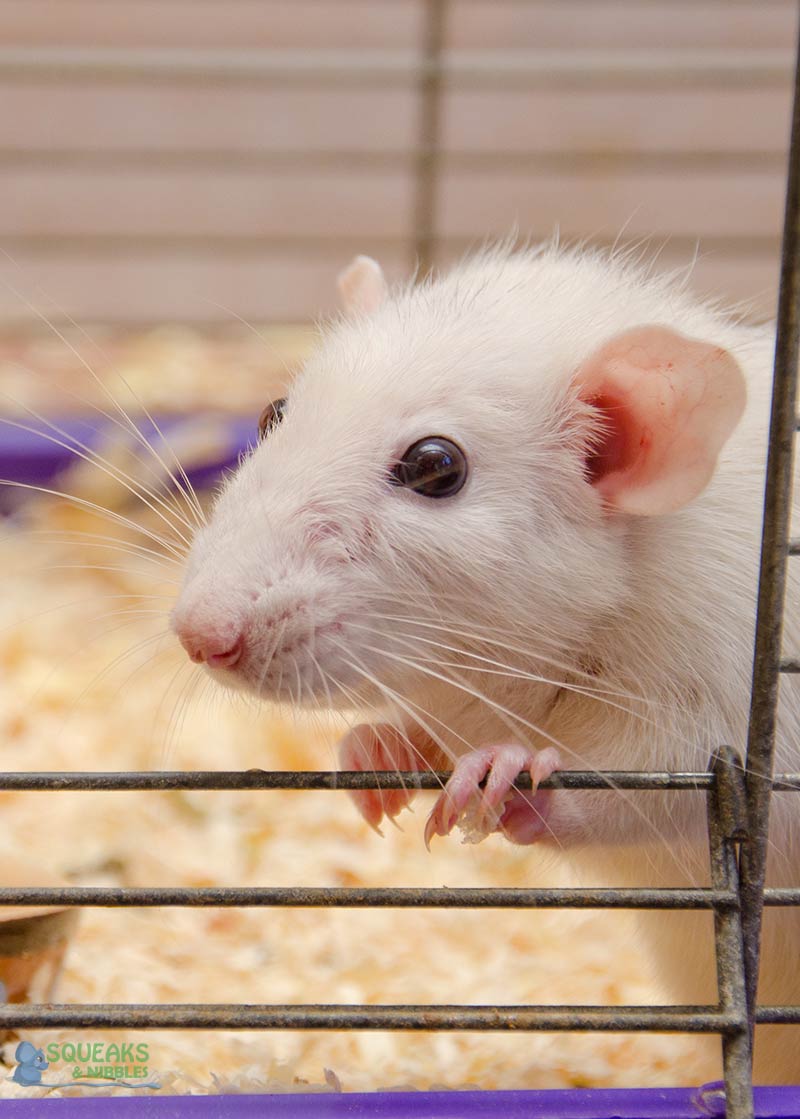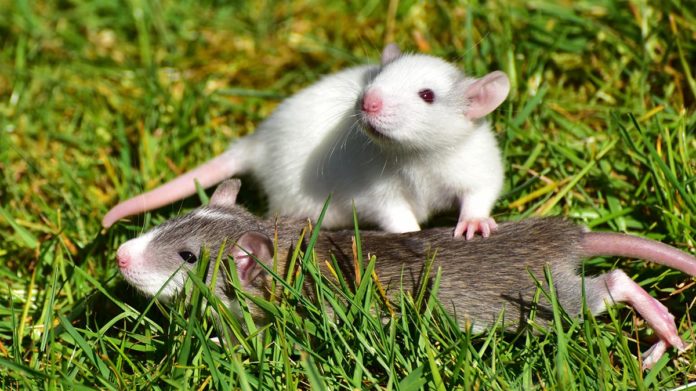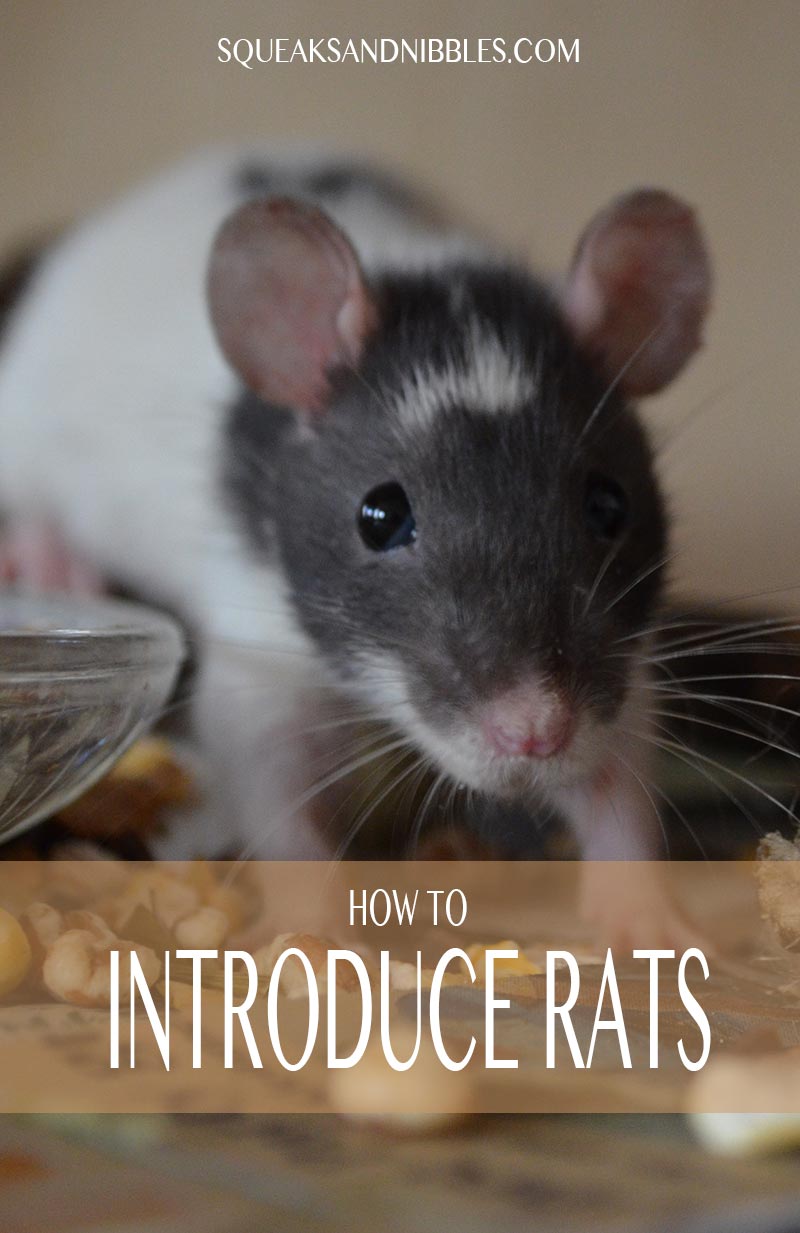Like people, rats are social animals. They generally like to live with other rats. But introducing pet rats to one another still needs to be done with care.
This is a guide to successfully introducing a new rat to your pet
Is it possible to introduce rats that have lived alone?
Not every rat is willing to accept a new friend. You should know that there is no absolute guarantee that your rats are going to make friends.
Some experts believe that female rats are more likely to reject newcomers than males. But there can be problems with either gender.
On the other hand, many rats especially younger rats, will happily settle down into their new life with a room mate if you take the right precautions and make introductions in steps as described here.

Don’t forget, if you are bringing a new rat into your home it is important to be sure that it is healthy before allowing the rat to interact with your existing pet rats.
You can find information on quarantine times for rats on the American Fancy Rat and Mouse Association website
Introducing rats – taking it slowly
It’s great that you want to give your rat a friend. But we need to take a look at the situation from his point of view.
Just because I like other people, it doesn’t mean I want a total stranger dropped into my living room with no explanation. Nor does your rat!
It’s the same for the new rat. Being tipped in into someone else’s home without warning is quite a traumatic experience.

Rat introduction – some precautions
No matter how careful you are with your rat introduction it is not without risk. Your pet rat may harm the new rat (or vice versa)
This risk of harm is much greater if there is a big difference in size between the two rats, and especially if one of the rats is still very young.
It is better to be safe than sorry and to avoid introducing a rat baby to an older rat until he is big enough to stand up for himself and at least to withstand a nip from the other rat.
Lindsey Pullman recommends that your baby rat weighs at least 7 ounces (200 grams) before attempting introductions with your older rat
Introducing rats – neutral territory
The first rule of safe introductions is neutral territory. Remember what we said about a stranger dropping into your living room.
Doing this to your rat is a sure fire way to start a huge fight. So neutral territory is a must. That means finding somewhere that neither rat sees as his home ground.
What can you use?
Well, if you have a brand new cage that the two of them are going to share in the future, then introductions could take place in there.
Remove all toys etc though. You need to be able to get in there swiftly to separate them if a fight breaks out.
Another popular option is the bath tub, or shower cabinet. But it needs to be big enough for you to get in there or get at the rats easily.
Don’t forget, that when you bust up a fight, you are likely to get bitten. So you want to protect yourself.
A small stiff sheet of plastic or card that can be placed in between the two rats as a physical and visual barrier may come in handy.
A squirt from a plant spray filled with water may be sufficient to break up a scuffle. And some gloves may help you if you need to pick up an angry rat!
How to introduce a new rat
It is important to point out that this period of introduction is going to take several days.
Just because your rats don’t fight on day one, it doesn’t mean they won’t fight on day two, or day six.
Once you have your neutral territory place the two rats in there together an observe them closely.
Aim for just a few minutes the first day. If all goes well, repeat the following day, twice a day if possible, and every day thereafter for gradually increasing periods of time
How do I know whether to separate my rats.
It can be difficult to know when to step in and separate your rats.
A certain amount of squeaking and squabbling is normal, you probably don’t need to leap in to separate the rats just because one has rolled on his back or fluffed up his fur.
Drawing blood is not a good sign of course, but to a certain extent you’ll have to use your judgement on when to break things up.
If you are worried it may be best to err on the side of caution. You can always try again later.
Rat introductions – moving in together
If all goes well, after ten days or so of successful neutral introductions, it’s time for your rats to move in and become room mates.
This step needs to be taken with care.
The ideal scenario is a brand new cage that neither rat has ever called home. If you cannot provide this you are going to have to get busy and scrub out the old cage very thoroughly indeed.
It needs to seem and smell like new to the rat who lived there before or there is a risk he will attempt to defend it.
The cage must also be large enough for the two rats to live comfortably and sleep separately if they want to.
The chances are, they’ll soon be snuggled up together, but this is more likely to happen if both feel secure in their space
Introducing rats – a summary
It’s great that you want your rat to have a friend. And it’s true that rats in general, enjoy company and prefer not to live alone.
But bear in mind that introducing rats does not always go to plan. An older rat that has always lived alone can become set in his or her ways.
It may not be possible to get to the point where he can even tolerate another rat in his presence, never mind enjoy their company
For the most part however, with careful introductions, your rat should grow to love his new friend and enjoy his new and more sociable life with a room mate.

















RAT ARE SOOO GROSS!!!!!!!!!!!!!!!!!!!!!!!!!!!!!!!!!! I HINK THEY ARE THE MOST DISCUSTING ANIMLA ON THE PLANET!!!!!!!!!!!!!!!!!!!!
🙁
*THINK
*ANIMAL
Youre gross if u dont like them stay off a website that gives info about rats DUH!!!!!!!!